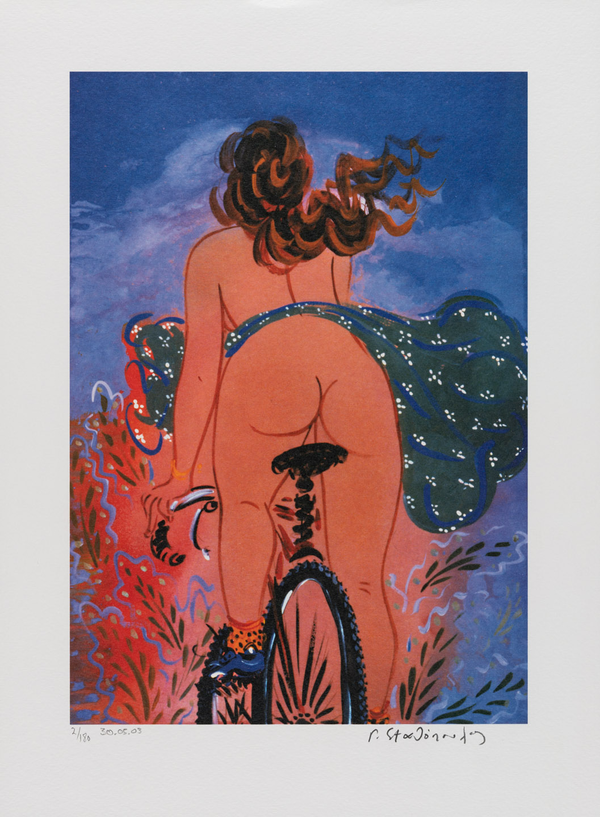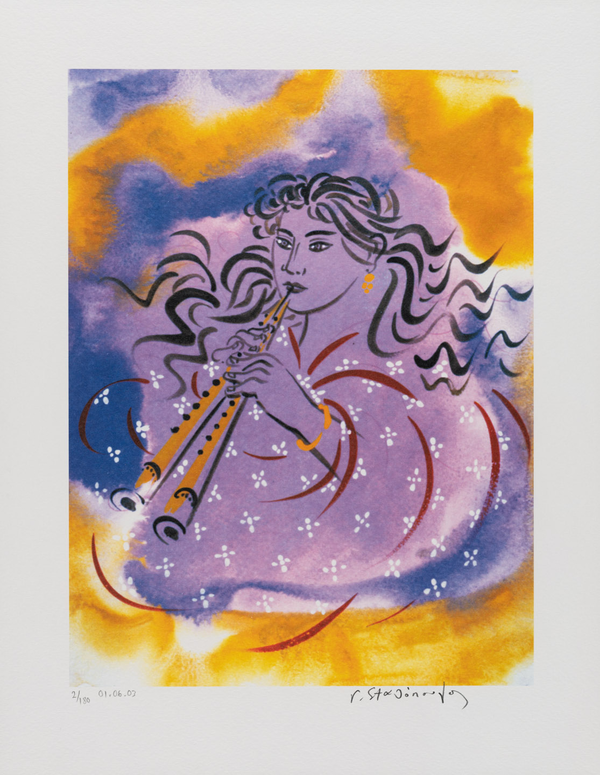Photocollography
Photocollography is a graphic arts method that uses light to engrave designs and belongs to the category of autotypy or halftone printing. Often confused with zincography in Greece, this method involves the use of a raster, a grid of dots arranged in parallel horizontal and vertical lines. William Fox Henry Talbot first used such a grid in 1853, and it was applied in a camera by E. and J. Bullock in 1865. Firmin Gillot from France created relief plates with a bitumen coating in 1850 for the...
...περισσότερα
Photocollography
Photolithography is a method in graphic arts that uses light for etching designs. Often confused with zincography in Greece, it falls under the category of autotype/reproduction.
Characteristics of Photolithography:
- The engraver uses a raster, a grid of dots arranged in parallel horizontal and vertical lines.
- This type of grid was first used by William Fox Henry Talbot (1800-1877) in 1853, but it was first used in a camera by E. and G. Bullock in 1865.
- In 1850, Frenchman Fermin Gillot (1820-1872) created relief plates coated with asphalt to illustrate the Parisian newspaper L'Avant-Scene.
Technique:
- A standard raster consists of two glass plates with parallel lines of dots, which are not visible due to the varnish applied over them.
- The raster, which can be either linear or tonal depending on the nature of the image to be printed as photolithography, is placed in front of the photographic plate.
- The two plates are positioned so that the parallel dots intersect at a right angle, creating dense areas in the shaded regions and sparse areas in the white ones (half-tone photolithography).
Process:
- After the negative photographic image is developed, the positive image is printed onto a zinc plate, which is sensitized with a gelatin glue coating (lepas) containing dichromate salts.
- After printing, the design on the zinc plate is revealed in a violet dye solution, and the plate's bottom surface is heated to enamel the design elements.
- During the subsequent oxidation, a dilute solution of sulfuric or, more commonly, nitric acid corrodes the parts of the zinc plate that were not exposed to light, leaving the design ready for printing.
Color Photolithography:
- In color photolithography, different color areas are photographed separately, with each color printed separately, up to a total of four, and the shades adjusted by hand.
- These colors produce various tonal gradations.
- Later, color films were used in photolithography.






